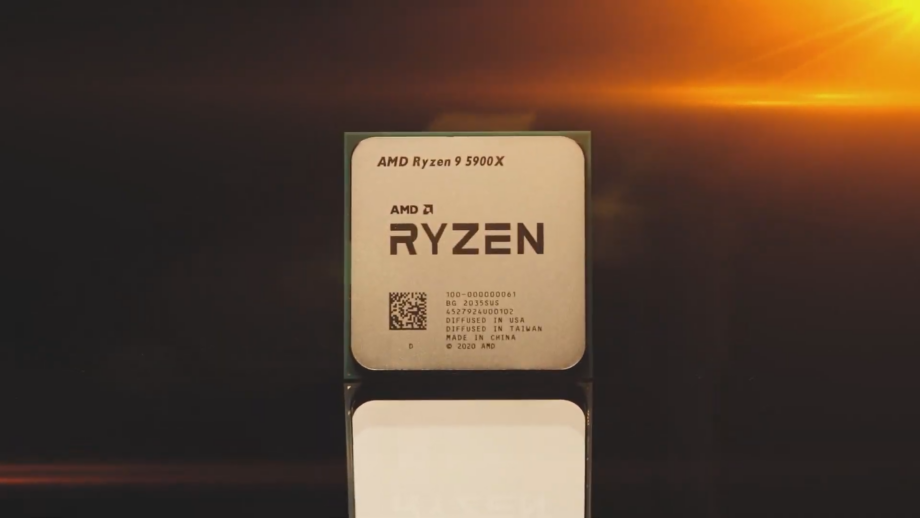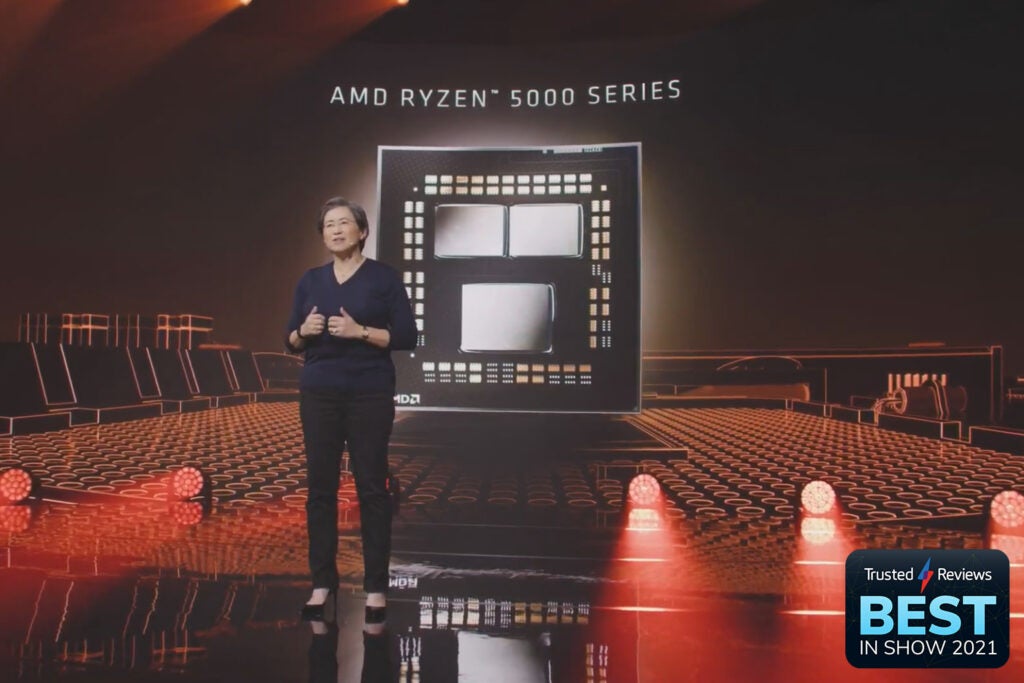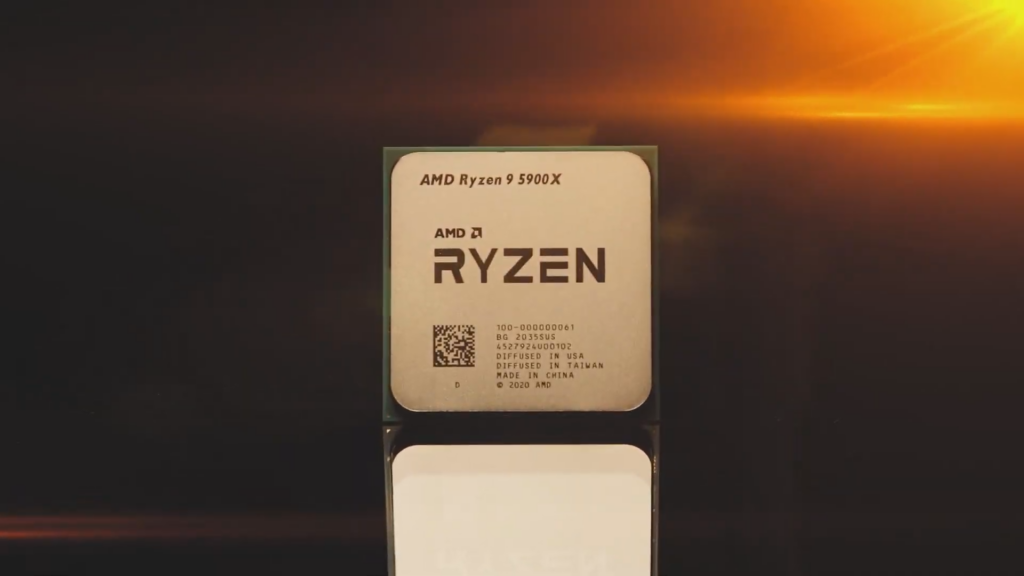AMD Ryzen 5000: Everything you need to know about the desktop and mobile processors

AMD has unveiled its new Ryzen 5000 processors for both desktop and laptops. The latter has only recently been revealed and AMD has provided Trusted Reviews with a deep dive look at the specs and performance power.
Both of the new processor lines are based on the new 7nm Zen 3 architecture, which AMD claims to provide 19% higher instructions per clock compared to the Zen 2 processors.
AMD also boasts that laptops packing the Ryzen 5000 mobile processors feature ‘leading battery life’, with a claimed 2 hour improvement on the previous generation.
Keep scrolling down for everything you need to know about the Ryzen 5000 processors, whether you’re looking for a new desktop chip or laptop.
AMD Ryzen 5000 release date and price
The AMD Ryzen 5000 desktop processors are available to buy right now, while the mobile variants will be arriving in laptops from February 2021.
The AMD Ryzen 5000 processors have a range of prices with the cheapest priced at £280/$299 and the most expensive demanding a £750/$799 fee. There seems to be a shortage of the high-end chips right now though, so don’t be surprised to see it sold out at your regional retailers.
A full breakdown of the prices can be seen below:
| AMD Ryzen 9 5950X | £750/$799 |
| AMD Ryzen 9 5900X | £540/$549 |
| AMD Ryzen 7 5800X | £390/$449 |
| AMD Ryzen 5 5600X | £280/$299 |
You can’t buy mobile chips individually for obvious reasons, so the price is linked directly to the laptop. The Ryzen 5000 will be available in a large range of laptops, from productivity notebooks to incredibly powerful gaming systems.
Related: Intel vs AMD

AMD Ryzen 5000 mobile processor specs and performance
AMD labelled its Ryzen 5000 mobile processors as “the ultimate blend of performance and efficiency” for laptops, with boosted speeds thanks to the new Zen 3 architecture and improved battery life. These new Ryzen 5000 mobile processors have been split into three categories:
- H-Series – High-end performance for content creators and gamers.
- U-Series – Thin and light notebooks with maximised battery life.
- Pro-Series – For business-focussed portables.
Furthermore, AMD has split its H-Series in half this generation, with the HS range balancing performance and portability for on-the-go use and HX prioritising performance power above all else. All of these processor categories are labelled at the end of every mobile processor name, giving you a good idea of what user the laptop is aimed at.
The U-Series is the category that will appeal to the majority, powering productivity laptops such as the Acer Swift, Asus ZenBook and HP Pavilion ranges.
AMD claims performance and battery life improvements from the previous generation, apparently capable of keeping laptops chugging for up to 21 hours of video playback between charges.
The most powerful mobile processor of the range is called the Ryzen 7 5800U, with AMD claiming it’s the only ultra-thin laptop chip packing 8 cores. Check out the full range below:
| Architecture | Cores / Threads | Max boost (base) | GPU Cores | TDP | |
| Ryzen 7 5800U | Zen 3 | 8 / 16 | 4.4 (1.9) | 8 | 15W |
| Ryzen 7 5700U | Zen 2 | 8 / 16 | 4.3 (1.8) | 8 | 15W |
| Ryzen 5 5600U | Zen 3 | 6 / 12 | 4.2 (2.3) | 7 | 15W |
| Ryzen 5 5500U | Zen 2 | 6 / 12 | 4.0 (2.1) | 7 | 15W |
| Ryzen 3 5400U | Zen 3 | 4 / 8 | 4.0 (2.6) | 6 | 15W |
| Ryzen 3 5300U | Zen 2 | 4 / 8 | 3.8 (2.6) | 6 | 15W |
Meanwhile, the H-Series of Ryzen 4000 processors are made for high-end laptops that are intended for content creators and gamers. The Asus ROG Flow X13, Lenovo Legion 7 and HP Omen 15 are just a few of the large selection of laptops confirmed to support H-Series Ryzen 5000 chips.
The HS series looks to balance performance and portability, with AMD looking to keep battery life respectable and keep the TDP as low as 35W. Think of super-portable gaming laptops such as the Asus ROG Zephyrus G14 and you’ll have a good idea of what AMD is aiming for.
The most powerful chip of the HS range will be the Ryzen 9 5980HS, packing 8 cores, 16 threads and a max frequency speed of 4.8GHz.
The HX series will put all of the focus on performance power, meaning any laptop featuring such chips will likely be large, unwieldy and lacking battery life stamina.
On the flip side, AMD reckons these are the “world’s best mobile processors for gamers” surpassing even Threadripper processors from previous generations. When paired with an RTX 3080 GPU, AMD claims the Ryzen 9 5900HX chip is capable of enabling gaming laptops to reach up to 185.5fps for Shadow of the Tomb Raider and up to 85fps for Assassin’s Creed Valhalla.
Check out a full breakdown of the Ryzen 5000 H-Series processor range below:
| Architecture | Cores / Threads | Max boost (base) | GPU Cores | TDP | |
| Ryzen 9 5980HX | Zen 3 | 8 / 16 | 4.8 (3.3) | 8 | 45W+ |
| Ryzen 9 5980HS | Zen 3 | 8 / 16 | 4.8 (3.0) | 8 | 35W |
| Ryzen 9 5900HX | Zen 3 | 8 / 16 | 4.6 (3.3) | 8 | 45W+ |
| Ryzen 9 5900HS | Zen 3 | 8 / 16 | 4.6 (3.0) | 8 | 35W |
| Ryzen 7 5800H | Zen 3 | 8 / 16 | 4.4 (3.2) | 8 | 45W |
| Ryzen 7 5800HS | Zen 3 | 8 / 16 | 4.4 (2.8) | 8 | 35W |
| Ryzen 5 5600H | Zen 3 | 6 / 12 | 4.2 (3.3) | 7 | 45W |
| Ryzen 5 5600HS | Zen 3 | 6 / 12 | 4.2 (3.0) | 7 | 35W |
We’ll be reviewing many Ryzen 5000 mobile laptops throughout the year to get a better idea of performance and battery levels, so keep an eye out for more information.

AMD Ryzen 5000 desktop processor specs and performance
The Ryzen 5000 desktop series will use AMD’s new Zen 3 processor architecture, which apparently provides 19% higher instructions per clock compared to Zen 2.
The AMD Ryzen 5000 processors will see up to 16 cores and 32 threads, with boost frequency speeds as high as 4.9GHz. AMD claims the Ryzen 9 5950X and Ryzen 9 5900X chips are the ultimate desktop processors for both gaming and content creation.
Every Ryzen 5000 processor, besides the Ryzen 5 5600X, will feature a 105W TDP and won’t have a Wraith Stealth cooler bundled in. This will mean you’ll need to buy you’re own cooler if you don’t already own one.
| Model | Cores /
Threads |
TDP
(Watts) |
Boost / Base Frequency (GHz) | Total Cache | Cooler |
| Ryzen 9 5950X | 16C / 32T | 105W | Up to 4.9 / 3.4 | 72MB | N/A |
| Ryzen 9 5900X | 12C / 24T | 105W | Up to 4.8 / 3.7 | 70MB | N/A |
| Ryzen 7 5800X | 8C / 16T | 105W | Up to 4.7 / 3.8 | 36MB | N/A |
| Ryzen 5 5600X | 6C / 12T | 65W | Up to 4.6 / 3.7 | 35MB | Wraith Stealth |
As per usual, AMD has gone big with core and thread counts, with the Ryzen 9 5950X chip seeing 16 cores and 32 cores. For comparison, the upcoming Intel Rocket Lake desktop processors are rumoured to max out at 8 cores and 16 threads. This could mean AMD will retain it’s superiority for multi-core performance, although Intel could make up for that with more efficient architecture and boosted clock speeds.
We’re yet to test the performance of AMD Ryzen 5000 desktop processors, but AMD has provided its own figures while there has seemingly also been some benchmark leaks. Take all of these results with a pinch of salt for now though.
AMD seemed particularly keen to highlight the single-core performance for the Ryzen 5000 processors, with both the Ryzen 9 5950X and Ryzen 5900X surpassing Intel’s i9-10900K processor in the Cinebench R20 single-threaded benchmark test.
With Intel typically excelling at gaming performance, AMD also emphasised the Ryzen 9 5900X offers an 26% faster gaming performance on average when compared to the Ryzen 9 3900 XT. A video demo even showed the Ryzen 9 5900X to boast a 40fps advantage in Shadow of the Tomb Raider when compared to its Ryzen 3000 series counterpart.
We’ll have more details on the performance once our reviews go live. Until then, keep an eye on Trusted Reviews for additional news and rumours.


